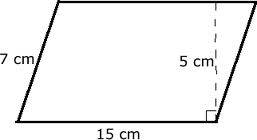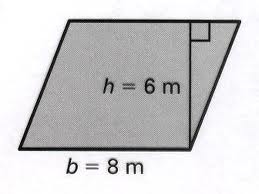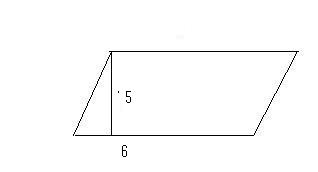The area of a polygon is the number of square units inside the polygon. Area is 2-dimensional and is the space taken up inside a polygon.
A parallelogram is a 4-sided shape formed by two pairs of parallel lines. Opposite sides are equal in length and opposite angles are equal in measure. To find the area of a parallelogram, multiply the base by the height. The formula is:
Area = b • h
Don’t forget the answer is always squared when working with area! Also if no unit of measurement is given in the problem, like ft, in, or cm, then just use “units” as part of your answer.
*The base and height of a parallelogram must be perpendicular. However, the lateral sides of a parallelogram are not perpendicular to the base. Thus, a dotted line is drawn to represent the height.
Example 1:
Step 1: Write the formula (A= b • h)
Step 2: Substitute the variables (A= 8 • 6)
Step 3: Solve (A= 48m2)
Example 2:
Step 1: (A = b • h)
Step 2: (A = 6 • 5)
Step 3: (A = 30units2 or 30u2)


